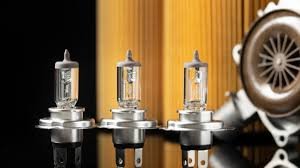Audi 5 Cylinder 10V Turbo Valve Shims: Complete Guide for Owners and Enthusiasts
Audi 5 Cylinder 10V Turbo Valve Shims: Complete Guide for Owners and Enthusiasts

Introduction
Owners of classic Audi turbocharged five-cylinder engines quickly learn that small parts can make a big difference. Among the most important of these components are the Audi 5 Cylinder 10V Turbo Valve Shims. These tiny discs sit between the camshaft lobe and the valve lifter, setting the clearance (or lash) that lets the valvetrain work properly. Because these engines rely on mechanical rather than hydraulic adjustment, keeping shims within specification is critical for power, efficiency, and longevity. This guide explains everything you need to know about these shims: their purpose, how they’re measured, and how to maintain or replace them.
Understanding the Audi 5 Cylinder 10V Turbo Engine
A Quick Overview
Audi’s five-cylinder 10-valve turbocharged engines were used in models like the Audi 200 Turbo and the legendary ur-quattro. These engines feature a single overhead camshaft with two valves per cylinder on the intake side and one on the exhaust, totaling ten valves. This design produced distinctive sound and robust torque but required careful valve clearance management.
Where Valve Shims Fit In
Instead of self-adjusting lifters, these engines use Audi 5 Cylinder 10V Turbo Valve Shims to set clearance. Each shim is precisely machined to a specific thickness. Installing the correct shim ensures that valves open fully and close tightly at the right time, which is essential under boost pressures generated by the turbocharger.
What Valve Shims Do
Maintaining Proper Clearance
When the engine heats up, metal expands. If there isn’t enough clearance between the cam lobe and the valve mechanism, the valve may fail to seat properly, losing compression and causing hot gases to erode the valve seat. Too much clearance, on the other hand, produces excessive ticking noise and slower valve action. The right shim thickness strikes the perfect balance.
Protecting the Engine Under Boost
Turbocharged engines place more thermal and mechanical stress on valves than naturally aspirated units. Audi 5 Cylinder 10V Turbo Valve Shims help maintain correct timing and sealing even at higher cylinder pressures. That’s why performance tuners pay close attention to shims when rebuilding or modifying these motors.
Recognizing Shim-Related Problems
| Symptom | Possible Cause |
|---|---|
| Loud ticking noise from valvetrain | Clearance too large (shim too thin) |
| Loss of power or misfire at high RPM | Clearance too tight (shim too thick) |
| Uneven cam lobe wear | Incorrect or poor-quality shims |
| Burnt valves | Valves not fully seating under heat/boost |
Spotting these signs early can save you from expensive repairs. If in doubt, measure and adjust your shims.
Measuring and Adjusting Audi 5 Cylinder 10V Turbo Valve Shims
Tools You’ll Need
-
Feeler gauges
-
Micrometer for shim thickness
-
Camshaft rotation tool or socket on crank pulley
-
Valve lifter depressor or special shim tool
-
Service manual for factory specifications
Step-by-Step Guide
-
Remove the valve cover to expose camshaft and lifters.
-
Rotate the engine until each cam lobe is pointing away from the shim to relieve pressure.
-
Measure the gap between cam lobe and shim with feeler gauges.
-
Remove the shim using the depressor tool or by lifting out the bucket where applicable.
-
Measure the shim thickness with a micrometer.
-
Calculate the correct thickness:
New shim = Old shim + (Measured clearance − Specified clearance) -
Install the new shim, re-assemble, and re-check clearance.
Most factory manuals list cold clearances around 0.35 mm intake and 0.40 mm exhaust, but always confirm for your specific engine code.
Best Practices for Maintenance
-
Check clearances regularly: after every major service, high-mileage interval, or engine rebuild.
-
Document shim sizes for each valve to simplify future adjustments.
-
Work on a clean bench to avoid contaminating the valvetrain.
-
Use only high-quality shims: OEM or reputable aftermarket. Poor machining can lead to rapid wear or shim displacement.
-
Re-torque components according to the manual after reassembly.
Choosing the Right Audi 5 Cylinder 10V Turbo Valve Shims
OEM vs Aftermarket
Original Audi shims ensure perfect fitment and metallurgy. However, reputable aftermarket suppliers now offer precision kits with a range of thicknesses. A complete kit is handy if you frequently tune or rebuild these engines.
Performance Considerations
High-lift camshafts or higher-RPM setups increase stress on shims. In these cases, stronger materials or slightly different diameters may be recommended. Consult your cam manufacturer’s guidelines and verify that your shim selection matches your performance goals.
Impact of Modifications
Many enthusiasts upgrade turbos, intercoolers, or camshafts on their five-cylinder Audi engines. Each of these changes can shift valvetrain dynamics:
-
Bigger turbos = more heat and pressure; ensure clearances are at the safe end of spec.
-
Aggressive cams = higher lift; may need thinner shims or different profiles.
-
Track use = more frequent inspections; shims wear faster under sustained high RPM.
By understanding how Audi 5 Cylinder 10V Turbo Valve Shims interact with these changes, you can maintain reliability while extracting more performance.
Tips From Experienced Owners
-
Work slowly and measure twice; incorrect shims can damage expensive components.
-
Keep an assortment of shims on hand if you regularly service multiple engines.
-
Use assembly lube on cam lobes during reassembly to protect the first start-up after adjustment.
-
Check for uneven wear on the camshaft and lifter buckets when doing shim work.
Conclusion
The Audi 5 Cylinder 10V Turbo Valve Shims might be small, but they’re essential to the health and performance of your engine. Understanding their function, recognizing problems early, measuring accurately, and using quality parts all contribute to smoother running, stronger power delivery, and longer engine life. Whether you’re restoring a classic ur-quattro or building a tuned street car, keeping your valve shims in top condition is one of the smartest maintenance investments you can make.





